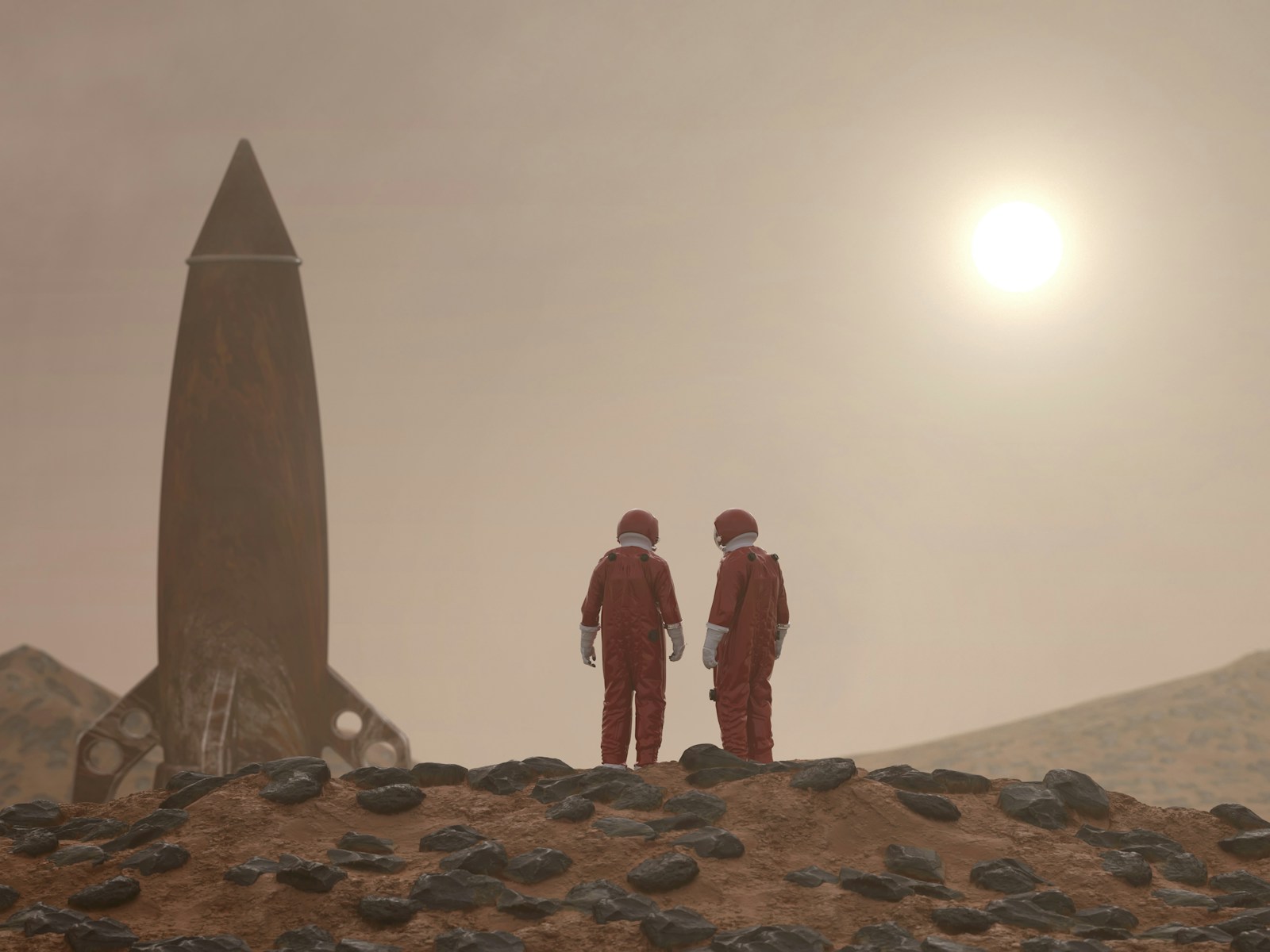Key Takeaways
• The Viking mission made the first soft landings on Mars in 1976.
• It carried three biology experiments to test Martian soil for life.
• Only one experiment showed signs that could be biological.
• A separate test found no organic compounds on Mars.
• Later, scientists discovered perchlorate in the soil destroys organics when heated.
• New models still leave room for microbes surviving on Mars today.
What the Viking mission taught us about Mars
In 1976, NASA sent two spacecraft called the Viking mission to Mars. Each craft had an orbiter and a lander. The orbiters mapped Mars from above. Meanwhile, the landers touched down gently with parachutes. They took pictures, measured weather, and studied soil and air. As a result, we learned that Mars lost most of its atmosphere long ago. In fact, dust storms lift tiny particles, turning the sky pink. Also, the Vikings showed that the air pressure changes with the seasons. Carbon dioxide freezes at the poles in winter and then sublimates in summer. This cycle makes the air pressure rise and fall each year.
How the Viking mission searched for life
Beyond weather and geology, the Viking mission focused on biology. The landers carried three experiments designed to spot microbes in Martian soil. Each test used a sealed chamber with soil and a special nutrient. Scientists watched for gas changes that might come from living organisms. They also included a fourth test to hunt for organic molecules.
Life-detection experiments and results
First, the pyrolytic release experiment simulated Martian air inside a chamber. It filled the air with radioactive carbon gases, then added soil. If microbes used the gas to make food, radioactivity in the soil would rise. Second, the labeled release experiment injected soil with a nutrient carrying radioactive carbon. If tiny life forms ate that nutrient, they would release radioactive gas. Third, the gas exchange experiment sealed soil in helium, a nonreactive gas. Then it added wet, humid, or dry nutrients. If microbes breathed, they would change the gas mix.
These three tests gave mixed signals. Only the labeled release experiment showed a response that looked like life. However, when scientists heated the soil by radio command, the gas vanished. That hint suggested chemistry, not biology. In the gas exchange experiment, humidity caused chemical changes in the soil itself. In other words, superoxides and oxygen from the soil reacted with water. Finally, the pyrolytic release test also pointed to inorganic reactions rather than biology. Overall, the Viking mission team ruled out clear proof of life, but they could not fully dismiss it either.
Molecular tests and surprising findings
In addition to the biology experiments, the Viking mission ran a molecular analysis test. It heated soil samples to look for organic molecules—the building blocks of life. Surprisingly, it found none. Scientists knew meteorites had delivered organics to Mars for billions of years. Yet, the Viking mission detected zero. For decades, this puzzled researchers. Then in 2008, another NASA lander called Phoenix found perchlorate in Martian soil. Perchlorate breaks down organics when heated. It likely destroyed any clues during the Viking mission’s analysis.
A new look at Mars life
Even now, researchers revisit Viking mission data to explore life beyond Earth. One scientist proposed a model based on the three biology experiments. He suggested microbes on Mars might use radioactive carbon in the tests to grow. Then at night, they could breathe oxygen and release carbon dioxide. This could explain the odd gas spikes seen when Viking mixed soil with water. Although unproven, this idea keeps the hope alive that Mars might still host life.
Conclusion
The Viking mission shaped our understanding of Mars’ air, soil, and history. It remains the only direct life-detection effort on another planet. Its experiments sparked decades of debate and new missions. Today, scientists build on its legacy as they design more advanced tests for organic molecules and living cells. The search for life on Mars continues, driven by the questions Viking raised fifty years ago.
FAQs
Could there still be life on Mars today?
Yes. While Viking mission results did not prove life, new models and findings leave room for microbes. Future missions will test this.
Why did the Viking mission fail to find organic compounds?
The mission’s analysis heated soil samples. Soils contained perchlorate, which breaks down organics when heated, hiding them from instruments.
What did the Viking mission reveal about Mars’ atmosphere?
It showed Mars once had a denser atmosphere. It also found seasonal air pressure swings caused by carbon dioxide freezing and sublimating at the poles.
Will future missions try to detect life differently?
Absolutely. New rovers carry more sensitive instruments. They aim to detect organic molecules without destroying them, and to search for signs of past or present life.
